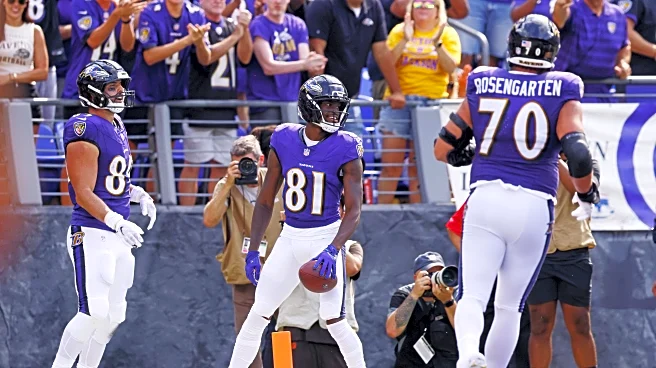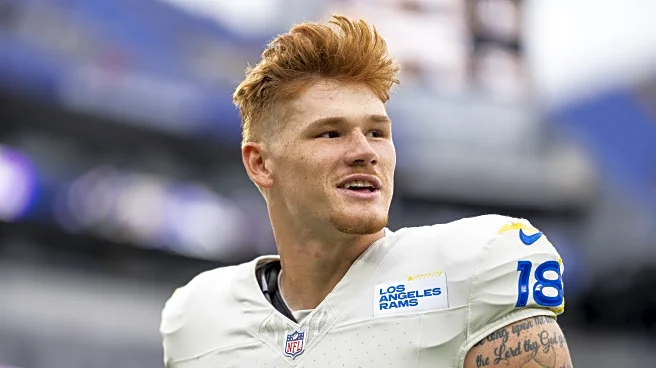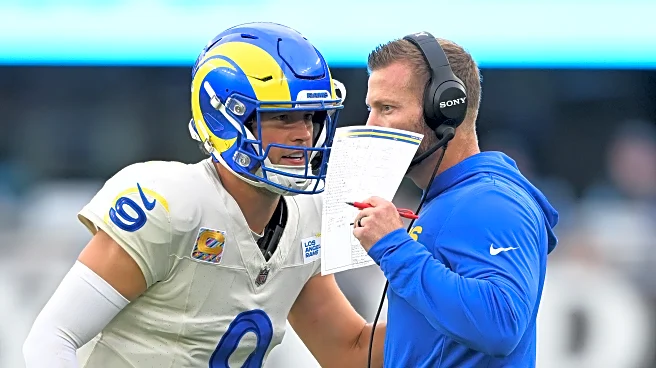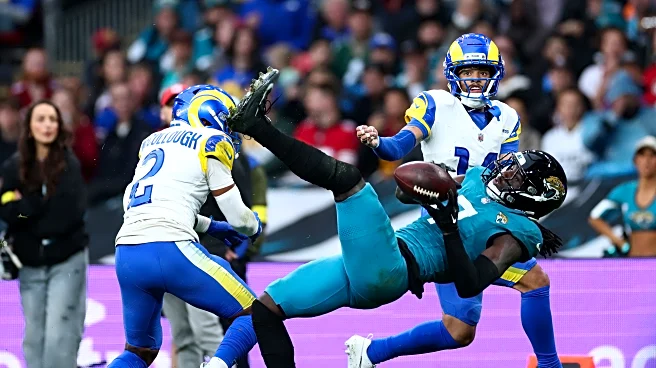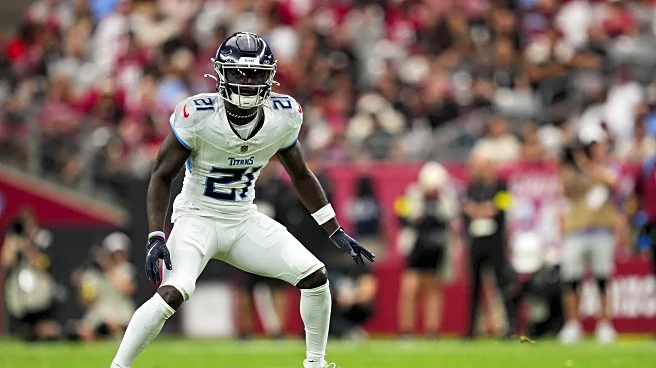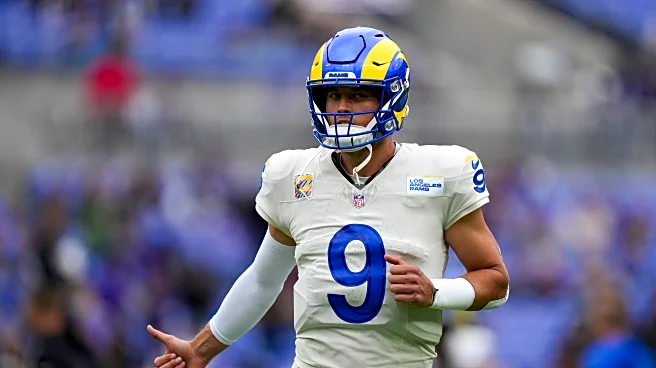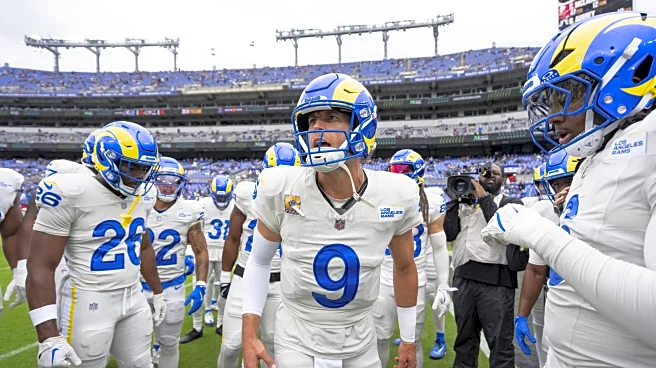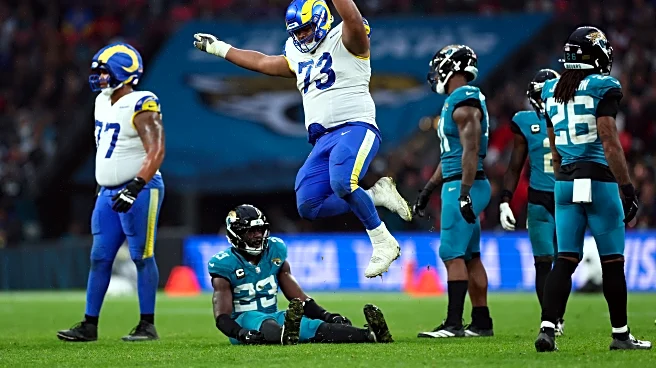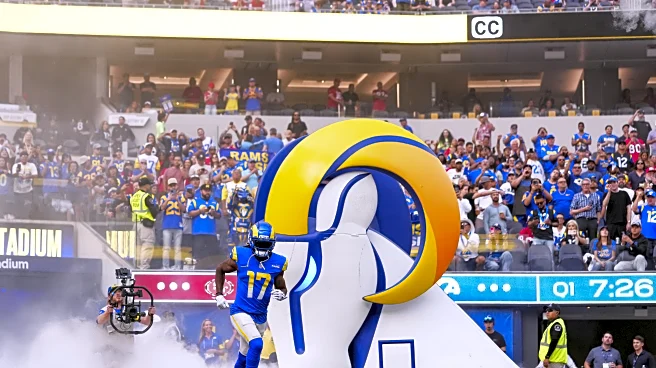What's Happening?
The Los Angeles Rams are actively seeking to bolster their defensive backfield as they approach the 2025 NFL trade deadline. Despite a strong offensive performance led by Matthew Stafford, Puka Nacua,
and Davante Adams, the Rams' secondary remains a point of concern. According to NFL insider Dianna Russini, the Rams are among several teams, including the Ravens, Colts, and Lions, making calls to acquire a cornerback. The Rams' current cornerback lineup includes Decobie Durant, Emmanuel Forbes, Darius Williams, Tre Brown, Josh Wallace, and the injured Ahkello Witherspoon. With a 5-2 record and tied atop the NFC West, the Rams are motivated to address this defensive gap to enhance their Super Bowl prospects.
Why It's Important?
The Rams' pursuit of a cornerback is crucial for maintaining their competitive edge in the NFC West and potentially securing a Super Bowl berth. Strengthening the secondary could significantly impact their defensive capabilities, which are currently overshadowed by their offensive prowess. The acquisition of a skilled cornerback would address the team's most glaring weakness, providing a more balanced approach to their game strategy. This move is particularly significant given the potential retirement of quarterback Matthew Stafford, making this season a pivotal opportunity for the Rams to capitalize on their current roster's strengths.
What's Next?
As the trade deadline approaches, the Rams are expected to intensify their efforts to secure a cornerback. Potential targets include Michael Carter II from the New York Jets and Roger McCreary from the Tennessee Titans, both of whom have been mentioned in trade discussions. The Rams will need to navigate competition from other teams also seeking defensive backfield improvements. The outcome of these trade negotiations could have a lasting impact on the Rams' season and their ability to contend for the Super Bowl.
Beyond the Headlines
The Rams' decision to pursue a cornerback trade highlights broader strategic considerations within the NFL, where teams must balance offensive and defensive strengths to remain competitive. This move underscores the importance of adaptability and proactive management in professional sports, as teams must continuously assess and address weaknesses to achieve long-term success.


